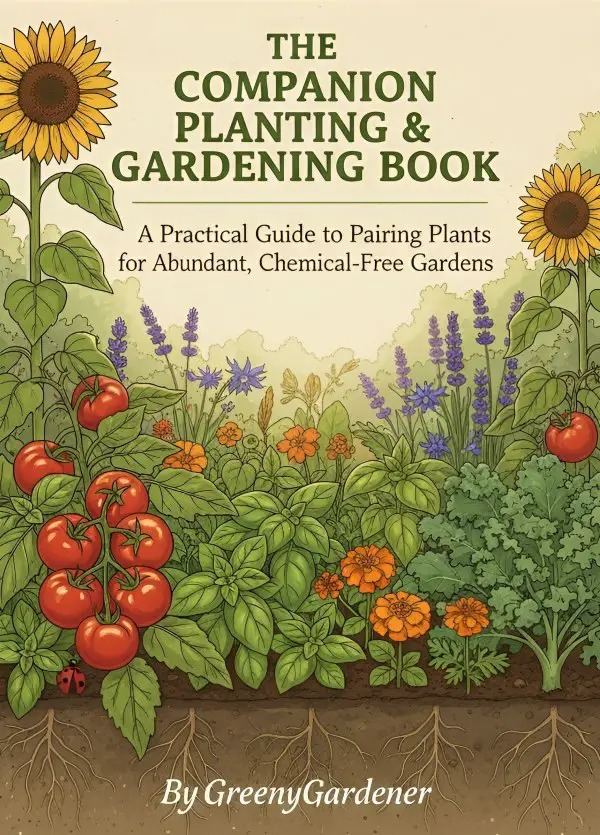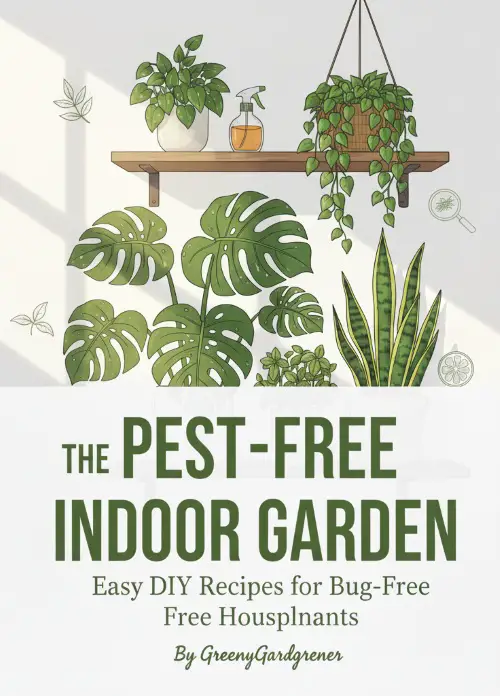Why Is My Rubber Plant Not Growing?(Reasons + Control Measure)
If you have a rubber plant (Ficus elastica) that seems to be struggling or not growing as expected, there can be several factors contributing to this issue. Rubber plants are popular houseplants known for their glossy, deep green leaves and ability to thrive in indoor environments. However, they still require proper care and attention to ensure healthy growth.
Let’s explore some possible reasons why your rubber plant may not be growing and what you can do to help it thrive.
What's On the Page
9 Reasons for Rubber Plants Not Growing
1. Insufficient Light
One common reason for a rubber plant’s stunted growth is insufficient light. Rubber plants thrive in bright, indirect light. If your plant is not receiving enough light, it may become leggy and its growth may slow down.
Control Measure
To remedy this, consider moving your rubber plant to a brighter location, preferably near a window where it can receive bright, filtered light. Avoid placing it in direct sunlight as this can scorch the leaves.
2. Inadequate Watering
Another factor that can impede the growth of a rubber plant is improper watering. Overwatering or underwatering can both be detrimental to its growth.

🌿 The Companion Planting & Gardening Book (eBook)
Bigger harvests, fewer pests — natural pairings & simple layouts. $6.99
Get – $6.99
🪴 The Pest-Free Indoor Garden (eBook)
DIY sprays & soil tips for bug-free houseplants. $4.89
Get – $4.99Control Measure
Rubber plants prefer a consistent watering schedule. Allow the top inch of soil to dry out between waterings, and then water thoroughly until it drains out from the bottom of the pot.
Ensure that the pot has proper drainage to prevent waterlogging, which can lead to root rot. Remember, it’s better to slightly underwater than overwater your rubber plant.
3. Lack of Humidity
Rubber plants are native to tropical regions and appreciate higher humidity levels. Dry indoor environments, especially during the winter months when heating systems are in use, can cause the leaves to dry out and hinder growth.
Control Measure
Increase humidity around your rubber plant by misting its leaves regularly, placing a tray filled with water near the plant, or using a humidifier. This will help recreate a more suitable environment for its growth.
4. Poor Soil Conditions
The type of soil your rubber plant is planted in can also affect its growth. Rubber plants prefer well-draining soil that retains some moisture.
Control Measure
A good potting mix for rubber plants consists of a blend of peat moss, perlite, and a small amount of sand to ensure proper drainage. Avoid using heavy, compacted soils that can hold excessive moisture, leading to root rot.
Additionally, consider repotting your rubber plant into a slightly larger pot if it has outgrown its current container.
5. Nutritional Deficiencies
Lack of essential nutrients can manifest as stunted growth in rubber plants.
Control Measure
Ensure that your rubber plant is receiving adequate nutrients by fertilizing it regularly. Use a balanced, water-soluble houseplant fertilizer diluted to half strength and apply it during the growing season (spring and summer) every two to four weeks.
Avoid fertilizing during the dormant period (fall and winter) when growth slows down.
6. Pest Infestation
Pests can also hinder the growth of rubber plants. Common pests that affect rubber plants include spider mites, mealybugs, and scale insects. Inspect your plant regularly for any signs of pest infestation, such as webbing, tiny insects, or sticky residue on the leaves.
Control Measure
If you notice any pests, take immediate action to control them. You can wipe the leaves with a damp cloth, use insecticidal soap, or introduce beneficial insects like ladybugs to control the pest population.
7. Root Bound Condition
Another factor that may be inhibiting the growth of your rubber plant is a root-bound condition. Over time, the roots of the plant can outgrow the container, becoming tightly packed and restricted. This can hinder the plant’s ability to absorb water and nutrients, leading to stunted growth.
Control Measure
Check the root system of your rubber plant by carefully removing it from its pot. If you notice a dense mass of roots circling around the root ball, it’s a clear sign of being root-bound.
If your rubber plant is root-bound, it’s important to repot it into a larger container. Choose a pot that is one size larger and has drainage holes. Gently loosen the roots and trim any excessively long or damaged ones. Place the plant in the new pot and fill it with fresh, well-draining potting mix.
This will provide the plant with the necessary space for root expansion and encourage healthy growth.
8. Temperature and Drafts
Temperature can have a significant effect on growing rubber plants. Cold temperatures can slow down the plants metabolic processes, leading to stunted growth or even damage to the leaves and stems.
Control Measure
Rubber plants thrive in warm temperatures ranging between 60-85°F (15-29°C). Exposure to temperatures below 50°F (10°C) can significantly impact their growth. Avoid placing your rubber plant near drafty windows, doors, or air conditioning vents, as sudden temperature fluctuations can stress the plant and hinder its growth.
Keep it in a stable, warm location within the optimal temperature range to promote healthy development.
9. Pruning Neglect
Pruning plays a crucial role in the growth and development of rubber plants. Regular pruning helps maintain the plant’s shape, encourages branching, and stimulates new growth. If your rubber plant is not growing, it could be due to a lack of pruning.
Control Measure
Inspect your plant for any leggy or overgrown stems. Use clean, sharp pruning shears to trim back these long stems, cutting just above a leaf node. This will encourage new growth and make the plant more compact and bushy.
Frequently Asked Questions
How much light does a rubber plant need to grow?
Rubber plants thrive in bright, indirect light. They need a good amount of light to grow properly. Place your rubber plant near a window where it can receive bright, filtered light. Avoid exposing it to direct sunlight, as it can scorch the leaves.
How often should I water my rubber plant?
Proper watering is essential for rubber plant growth. Allow the top inch of soil to dry out between waterings, and then water the plant thoroughly until water drains out from the bottom of the pot. Avoid overwatering, as it can lead to root rot. It’s better to slightly underwater than overwater your rubber plant.
How can I increase humidity for my rubber plant?
Rubber plants appreciate higher humidity levels. You can increase humidity around your plant by misting its leaves regularly, placing a tray filled with water near the plant, or using a humidifier. These methods help create a more suitable environment for its growth.
What type of soil is best for rubber plants?
Rubber plants prefer well-draining soil that retains some moisture. A suitable potting mix for rubber plants consists of a blend of peat moss, perlite, and a small amount of sand to ensure proper drainage. Avoid using heavy, compacted soils that can hold excessive moisture.
Final Words
In conclusion, there can be various reasons why your rubber plant is not growing as expected. It could be due to insufficient light, improper watering, low humidity, poor soil conditions, nutritional deficiencies, pest infestation, being root-bound, exposure to drafts or low temperatures, or lack of pruning.
By addressing these potential issues and providing the necessary care, you can encourage your rubber plant to start growing again.
Remember to be patient, as plants take time to recover and show signs of new growth. With proper attention and care, your rubber plant will likely regain its vigor and become a beautiful, thriving addition to your indoor space.
- Can You Clean African Violet Leaves – The Gentle Guide To A Spotless, - October 22, 2025
- African Violet Vs Cyclamen – Choosing Your Perfect Indoor Blooming - October 22, 2025
- What Is Purpose Of A Tiny Straw In African Violets – Your Ultimate - October 22, 2025
